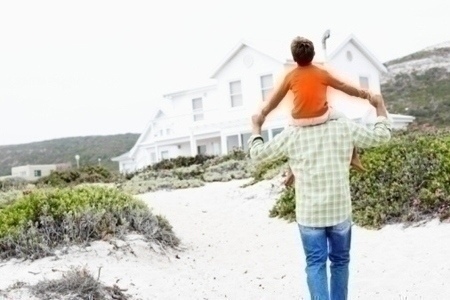 Vacation home sales rose strongly in 2013, while investment purchases fell below the elevated levels seen in the previous two years, according to the National Association of REALTORS®.
Vacation home sales rose strongly in 2013, while investment purchases fell below the elevated levels seen in the previous two years, according to the National Association of REALTORS®.
NAR’s 2014 Investment and Vacation Home Buyers Survey, covering existing- and new-home transactions in 2013, shows vacation-home sales jumped 29.7 percent to an estimated 717,000 last year from 553,000 in 2012. Investment-home sales fell 8.5 percent to an estimated 1.10 million in 2013 from 1.21 million in 2012. Owner-occupied purchases rose 13.1 percent to 3.70 million last year from 3.27 million in 2012. The sales estimates are based on responses from households and exclude institutional investment activity.
NAR Chief Economist Lawrence Yun expected an improvement in the vacation home market. “Growth in the equity markets has greatly benefited high net-worth households, thereby providing the wherewithal and confidence to purchase recreational property,” he said. “However, vacation-home sales are still about one-third below the peak activity seen in 2006.”
Vacation-home sales accounted for 13 percent of all transactions last year, their highest market share since 2006, while the portion of investment sales fell to 20 percent in 2013 from 24 percent in 2012.
Yun said the pullback in investment activity is understandable. “Investment buyers slowed their purchasing in 2013 because prices were rising quickly along with a declining availability of discounted foreclosures over the course of the year,” he said.
“In 2011 and 2012, investment property was a no-brainer because home prices had sharply over corrected during the downturn in many areas, creating great bargains that could be quickly turned into profitable rentals. With a return to more normal market conditions, investors now have to evaluate their purchases more carefully and do their homework,” Yun added.
The median investment-home price was $130,000 in 2013, up 13.0 percent from $115,000 in 2012, while the median vacation-home price was $168,700, up 12.5 percent from $150,000 in 2012.
All-cash purchases remained fairly common in the investment- and vacation-home market: 46 percent of investment buyers paid cash in 2013, as did 38 percent of vacation-home buyers.
Of buyers who financed their purchase with a mortgage, large downpayments continued to be the norm in 2013. The median downpayment for investment buyers was 26 percent, while vacation-home buyers typically put 30 percent down.
Forty-seven percent of investment homes purchased in 2013 were distressed homes, as were 42 percent of vacation homes.
Lifestyle factors remain the primary motivation for vacation-home buyers, while rental income is the main factor in investment purchases.
The typical vacation-home buyer was 43 years old, had a median household income of $85,600 and purchased a property that was a median distance of 180 miles from his or her primary residence; 46 percent of vacation homes were within 100 miles and 34 percent were more than 500 miles. Buyers plan to own their recreational property for a median of 6 years, down from 10 years in 2012.
Five percent of vacation-home buyers had already resold their property, while another 9 percent plan to sell within a year. “This reflects the 28 percent of recreational property buyers who said they purchased to diversify investments or saw a good investment opportunity,” Yun said.










